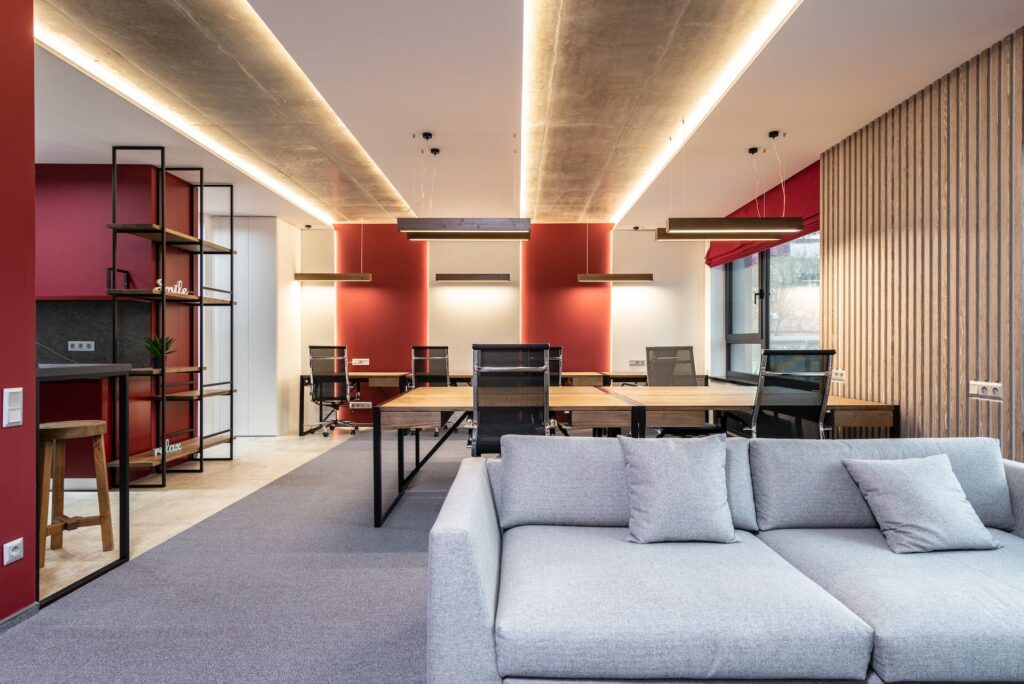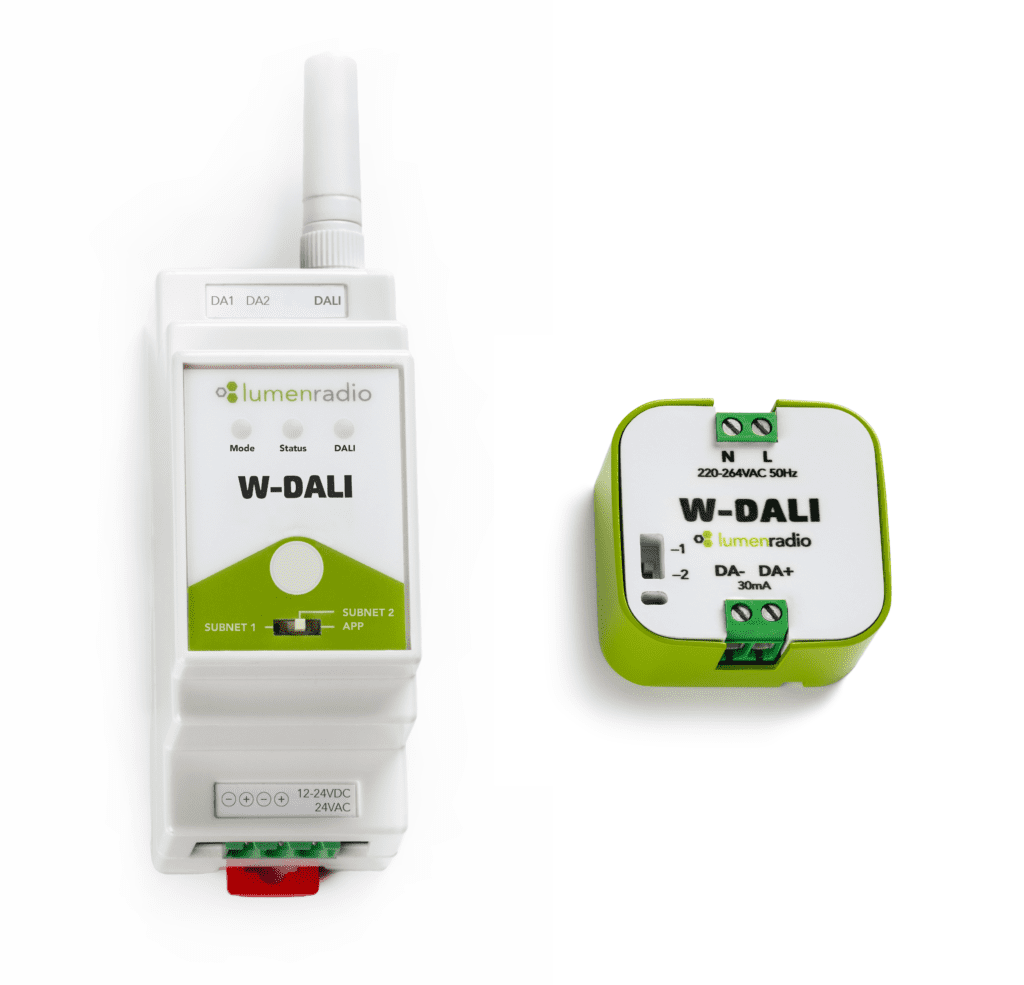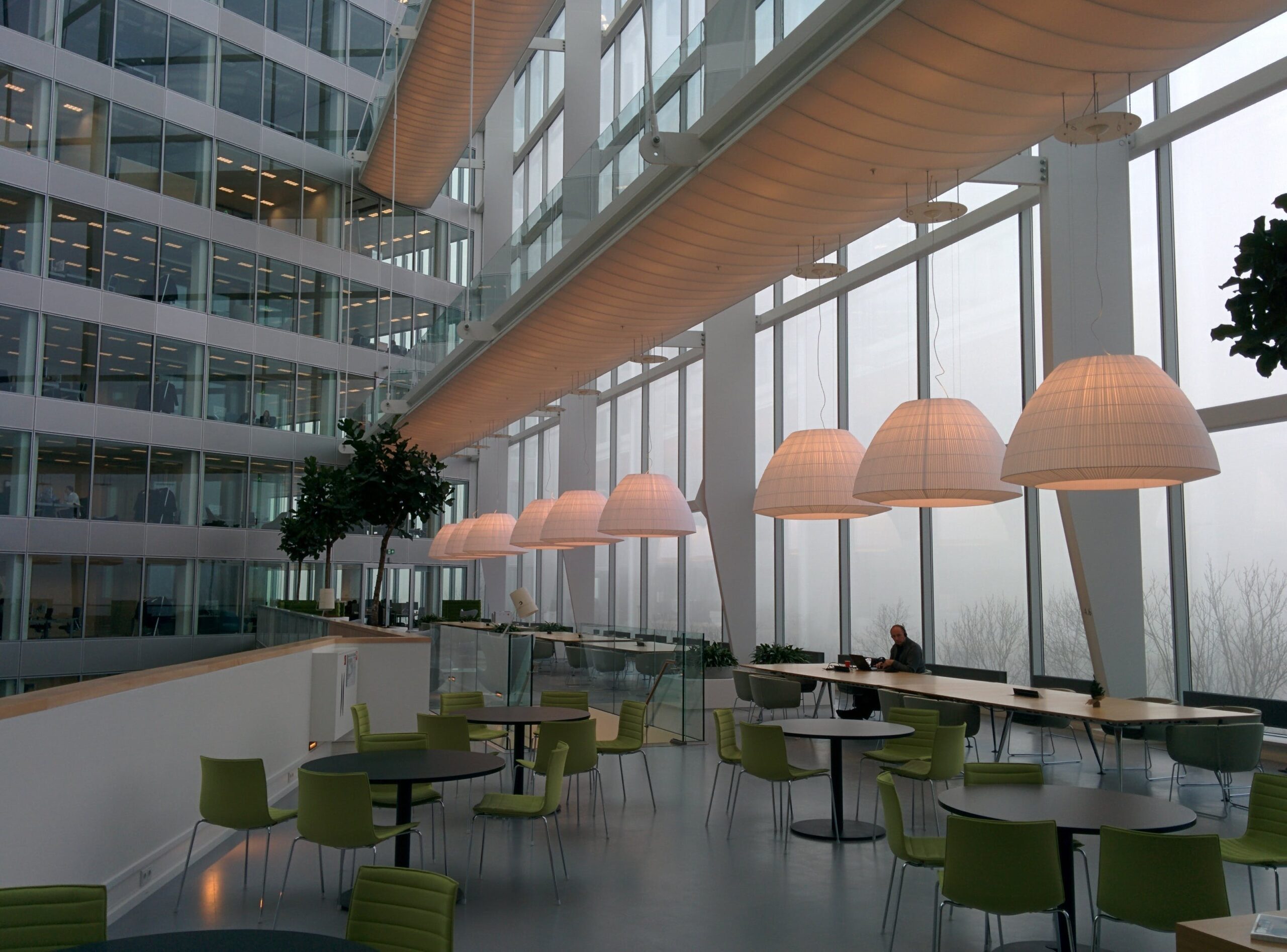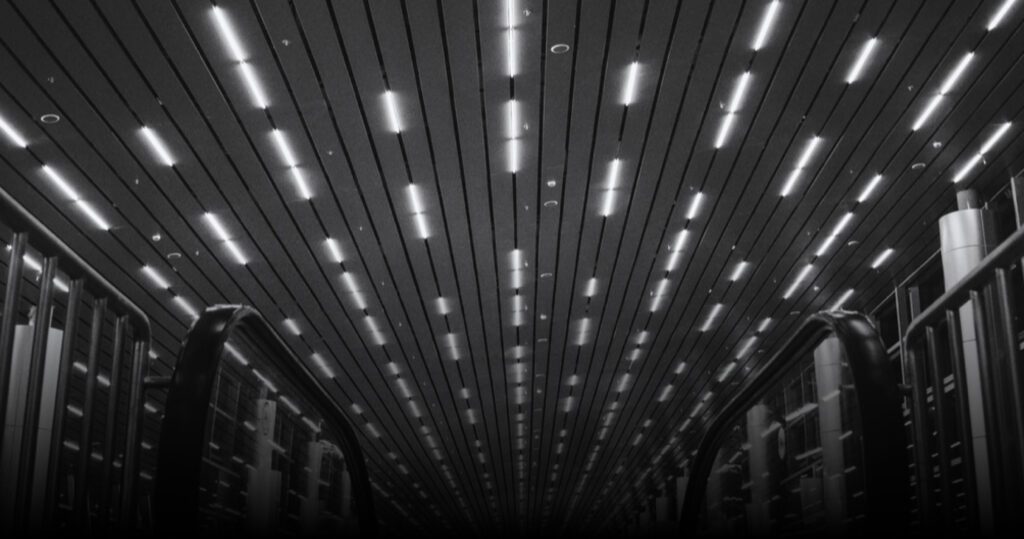The benefits of W-DALI
Driven by sustainability targets, buildings around the world are undergoing modernization and retrofit projects to make their lighting systems smarter and more energy efficient.
Upgrading an existing lighting system can be done in two ways – wirelessly or using cables. One is quick, easy and requires no construction work and the other uses cables.
What is DALI?
DALI (Digital Addressable Lighting Interface) is a global standard for dimming and digital lighting control.

Traditional DALI lighting systems require all of the components to be connected together using DALI data cables. That means cables running from a control box somewhere in the building to every single one of the lamps, or luminaires, in the network.
The problem with using cables
Carrying out a retrofit project with cables means new DALI wiring has to be installed from the control unit to every single luminaire in the building.
This is costly and takes time – both to plan and to install. Also, the construction work required to run new cables in a building which is currently in use causes a lot of disruption. In many cases, closing off rooms or even whole floors just to install cables is not an option for locations such as hospitals, schools or prisons.
Furthermore, running new cables is a particular issue for historical buildings. These types of heritage buildings are typically protected and cannot be structurally altered. This rules out rewiring as even minor construction work, such as drilling holes through walls, is not allowed.
Wireless indoor lighting control
W-DALI – does away with the need for recabling. By installing a small wireless transmitter unit in the electrical cabinet next to the existing DALI controller and placing receiver nodes where there are luminaires, you achieve instant wireless connectivity. For electricians, DALI programming remains exactly the same, but the big difference is, no extra cables.
With W-DALI, users can remotely control and monitor lighting fixtures, adjust brightness levels, set scenes, and create schedules or zones for efficient energy management. In this way, W-DALI is perfect for all those buildings looking to work more sustainably and lower their energy consumption.
It is also worth noting that the EU ban on fluorescent lamps has opened up great savings opportunities for property owners as they transition from old, toxic lighting to more energy-efficient LED alternatives. Together with wireless lighting control, making the move to LED lamps can reduce energy usage by 75%.
Cut project cost and complexity
A wireless alternative to the DALI cable also offers many benefits to contractors and electricians. Compared to retrofitting a lighting network using cables, W-DALI takes much less time to install which means more installations can be carried out in total, resulting in better profit margins.
As mentioned above, the versatility of a wireless solution for lighting control enables the completion of any installation project, no matter the type or size of the building, so the range of projects which can be accepted by an electrician is much larger.

Take retrofitting a school, for example. Doing the job with cables restricts the timeframe in which the project can be carried out to the summer, when the school is closed. With W-DALI the same work can be done at any time during the year as it will not disrupt the running of the school.
W-DALI also makes it possible to tackle retrofit projects in protected buildings as no construction work is required and therefore no structural changes are made to the property. As a result, a contractor can take on projects which they would previously have had to turn down when cables were the only option. This creates a real advantage over competitors who are not offering a wireless solution.





